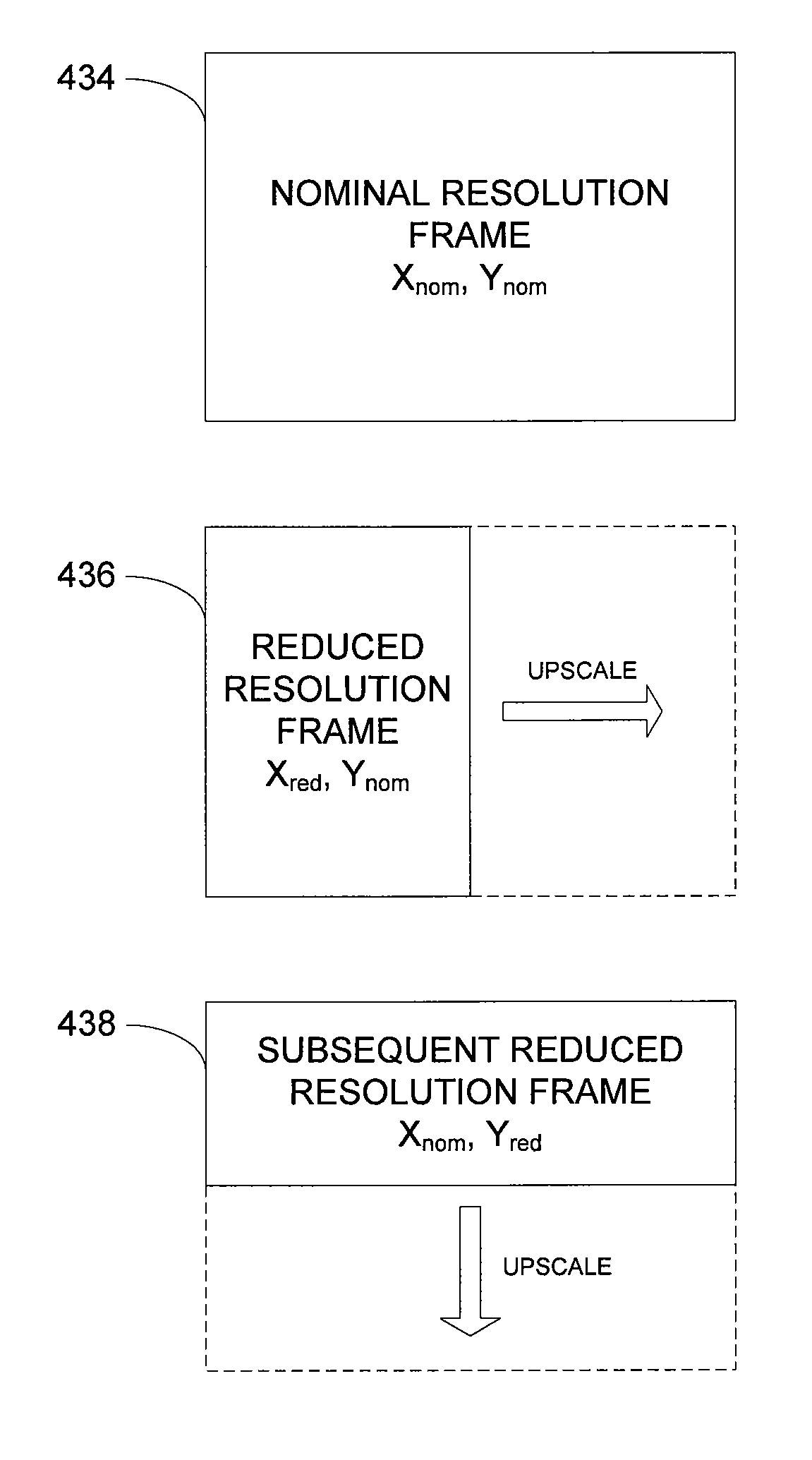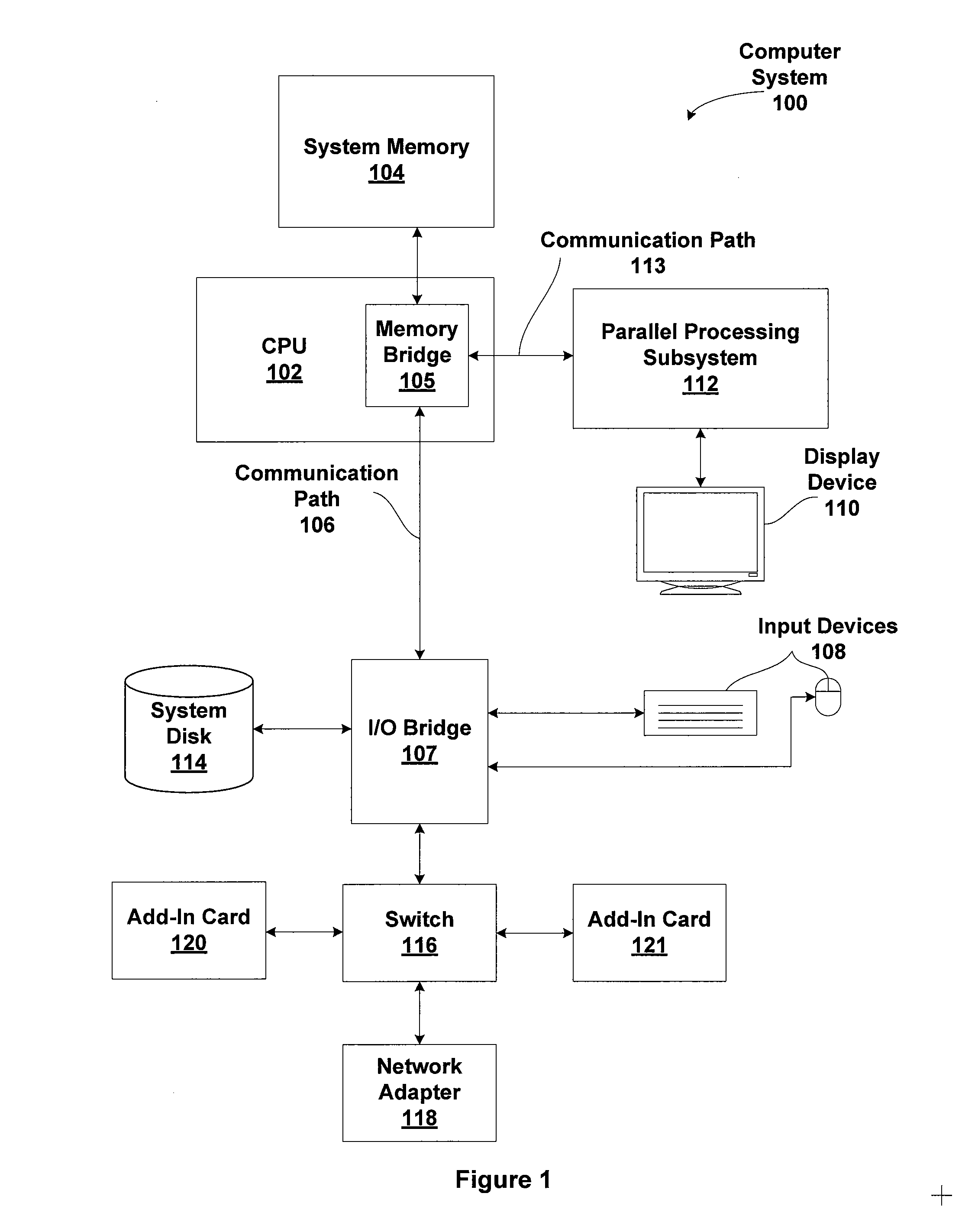Accelerated rendering with temporally interleaved details
a technology of temporal interleaved details and rendering, applied in the field of graphic processing, can solve the problems of increasing the computational load of the gpus, affecting so as to achieve the effect of maintaining the perceived image quality of the display and reducing the computational load of the gpu
- Summary
- Abstract
- Description
- Claims
- Application Information
AI Technical Summary
Benefits of technology
Problems solved by technology
Method used
Image
Examples
Embodiment Construction
[0018]In the following description, numerous specific details are set forth to provide a more thorough understanding of the present invention. However, it will be apparent to one of skill in the art that the present invention may be practiced without one or more of these specific details. In other instances, well-known features have not been described in order to avoid obscuring the present invention.
[0019]FIG. 1 is a block diagram illustrating a computer system 100 configured to implement one or more aspects of the present invention. As shown, computer system 100 includes a central processing unit (CPU) 102 and a system memory 104 communicating via a bus path through a memory bridge 105. Memory bridge 105 may be integrated into CPU 102 as also shown, or alternatively, memory bridge 105, may be a conventional device, e.g., a Northbridge chip, that is connected via a bus to CPU 102. Memory bridge 105 is connected via communication path 106 (e.g., a HyperTransport link) to an I / O (inp...
PUM
 Login to view more
Login to view more Abstract
Description
Claims
Application Information
 Login to view more
Login to view more - R&D Engineer
- R&D Manager
- IP Professional
- Industry Leading Data Capabilities
- Powerful AI technology
- Patent DNA Extraction
Browse by: Latest US Patents, China's latest patents, Technical Efficacy Thesaurus, Application Domain, Technology Topic.
© 2024 PatSnap. All rights reserved.Legal|Privacy policy|Modern Slavery Act Transparency Statement|Sitemap



